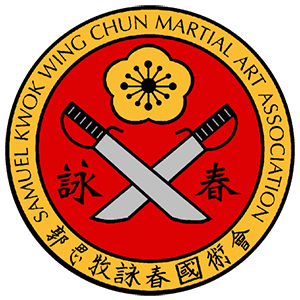Wing Chun
PRINCIPLE BASED FIGHTING
The Wing Chun system is made up of two parts. The first are it's movements. Wing Chun consists of only a handful of movements, each of them requires practice and understanding of its underlying principles to be effective. Although Wing Chun contains techniques (or combinations), in most cases it leaves it up to the exponent how to apply them and in what context. This gives the artist a lot of freedom and flexibility in how to combine and apply its' different movements.
The second part of the system, that brings the simple movements to life, are fighting principles. When guided by these principles, a practitioner can truly adapt his martial art to any situation and creatively connect Wing Chun's separate movements in continuous motion.
Wing Chun doesn't require a certain body type to be used effectively. It takes the opposite approach and allows you to adapt the system to your own self, working with your natural strengths. A very straightforward and non-flashy martial art, based on physics and geometry, Wing Chun was created to effectively and decisively end a fight.
THE SHORTEST DISTANCE BETWEEN TWO POINTS
Wing Chun employs a number of different attacks. All of them obey the principle of shortest distance and attacking from the current position. We do not pull back before we attack to generate power as this only wastes time by increasing the distance to the target. This is where the famous one-inch punch exercise originates. It's just a display of short-range power generation skills used in Wing Chun.
We attack in a straight line from the point of attack directly to the target to further increase speed. This generally means no circular attacks. This often neutralizes an opponents attack and power before they are able to act or their attack can reach you. Although Wing Chun mainly operates on straight lines and triangles, it does also contain circular movements.
OVERCOMING FORCE WITH SOFTNESS
Wing Chun never clashes with an attack head on. Instead angles are employed. Attacks are deflected or redirected. The attackers force is borrowed to counter attack.
When a person is stiff or applies too much strength at the wrong moment in a fight, their balance is easily manipulated and upset. Wing Chun trains specific skills to steal an opponents force while staying relaxed.
This softness allows flexibility and fast change of the movements as well, effortlessly flowing from one combination of hand positions to any other - adapting to split second changes in pressure and direction of attack.
SIMULTANEOUS ATTACK AND DEFENSE
Wing Chun fighters train to be ambidextrous. Every attack is accompanied by a defensive or controlling movement on the same beat. This also adds to Wing Chun's incredible speed and efficacy.
Instead of blocking an attack and then counterattacking, 1-2, both movements are executed at the same time, 1. This leaves the opponent little chance to adapt or respond.


